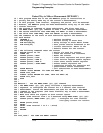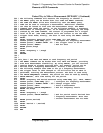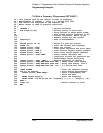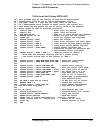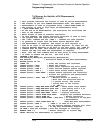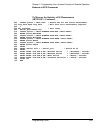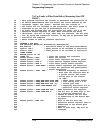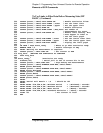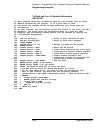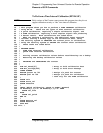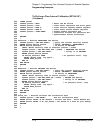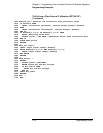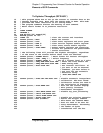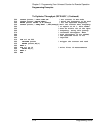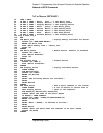
Chapter 3 Programming Your Universal Counter for Remote Operation
Programming Examples
3-68 Programming Guide
To Read and Store Calibration Information
(HP BASIC)
10 !This program reads the calibration data for the counter into an array.
20 !Before calibrating the counter, it is a good idea to read
30 !and store the current values in case something goes wrong with the
40 !calibration.
50 !In this program, the calibration values are stored in the array cal_data.
60 !Normally, you would store the calibration data on a disk for safe
70 !keeping. The calibration values should only be changed by running the
80 ! calibration diagnostics.
90 !
100 DIM Cal_data$[57] ! Array to hold calibration data
110 DIM Err_string$[255] ! Array to hold error message
120 CLEAR SCREEN
130 ASSIGN @Count TO 703 ! Assign I/O path for HP 53131A
140 CLEAR @Count
150 OUTPUT @Count;"*RST" ! Reset the HP 53131A
160 OUTPUT @Count;"*CLS" ! Clear event registers and error queue
170 OUTPUT @Count;"*SRE 0" ! Clear service request enable register
180 OUTPUT @Count;"*ESE 0" ! Clear event status enable register
190 OUTPUT @Count;":STAT:PRES" ! Preset enable registers and
200 ! transition filters for operation and
210 ! questionable status structures.
220 OUTPUT @Count;":CAL:DATA?" ! Ask for data
230 ENTER @Count USING "#,4A";Head1$
240 ENTER @Count USING "%,K";Cal_data$
250 PRINT "Calibration data now in array Cal_data"
260 ! You may want to store Cal_data$ and Head1$ on a disk.
270 ! If, at some later point, you need to send the calibration data
280 ! back to the counter, you would use the following command:
290 ! OUTPUT @Count;":CAL:DATA ";Head1$&Cal_data$ ! Send calibration data
300 ! REPEAT
310 ! OUTPUT @Count;"SYST:ERR?"
320 ! ENTER @Count;Err_num,Err_string$
330 ! IF Err_num<>0 THEN
340 ! PRINT Err_num,Err_string$
350 ! END IF
360 ! UNTIL Err_num=0
370 END



